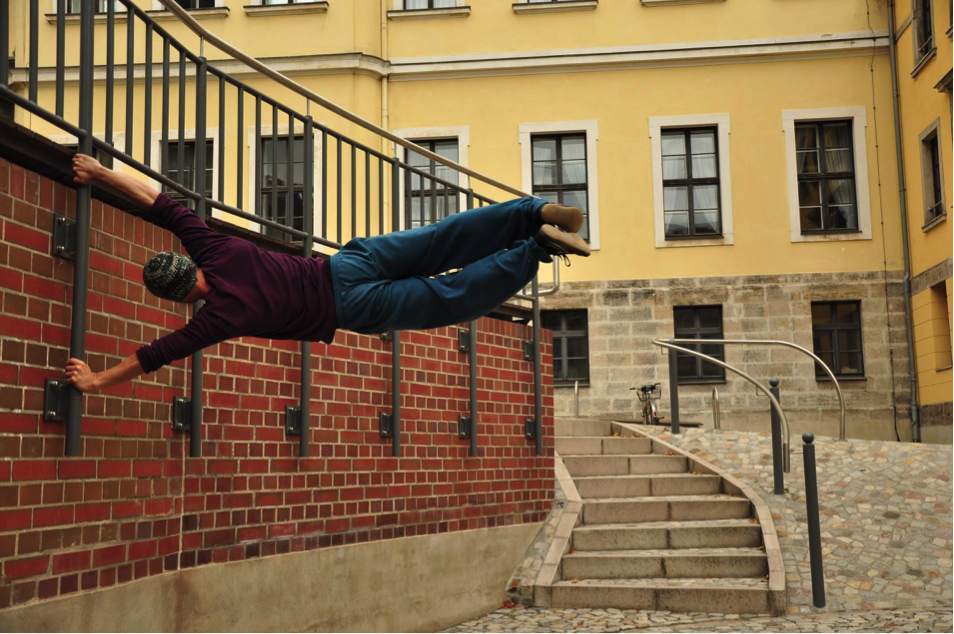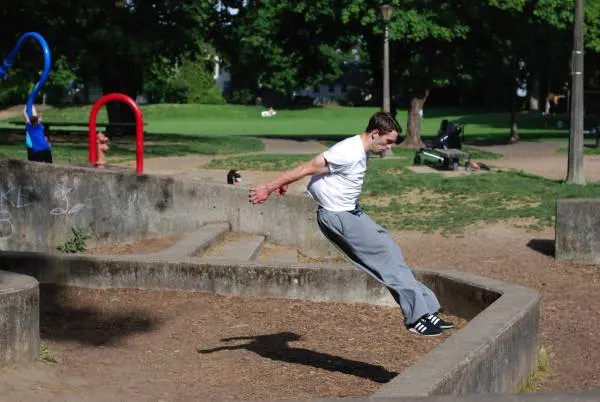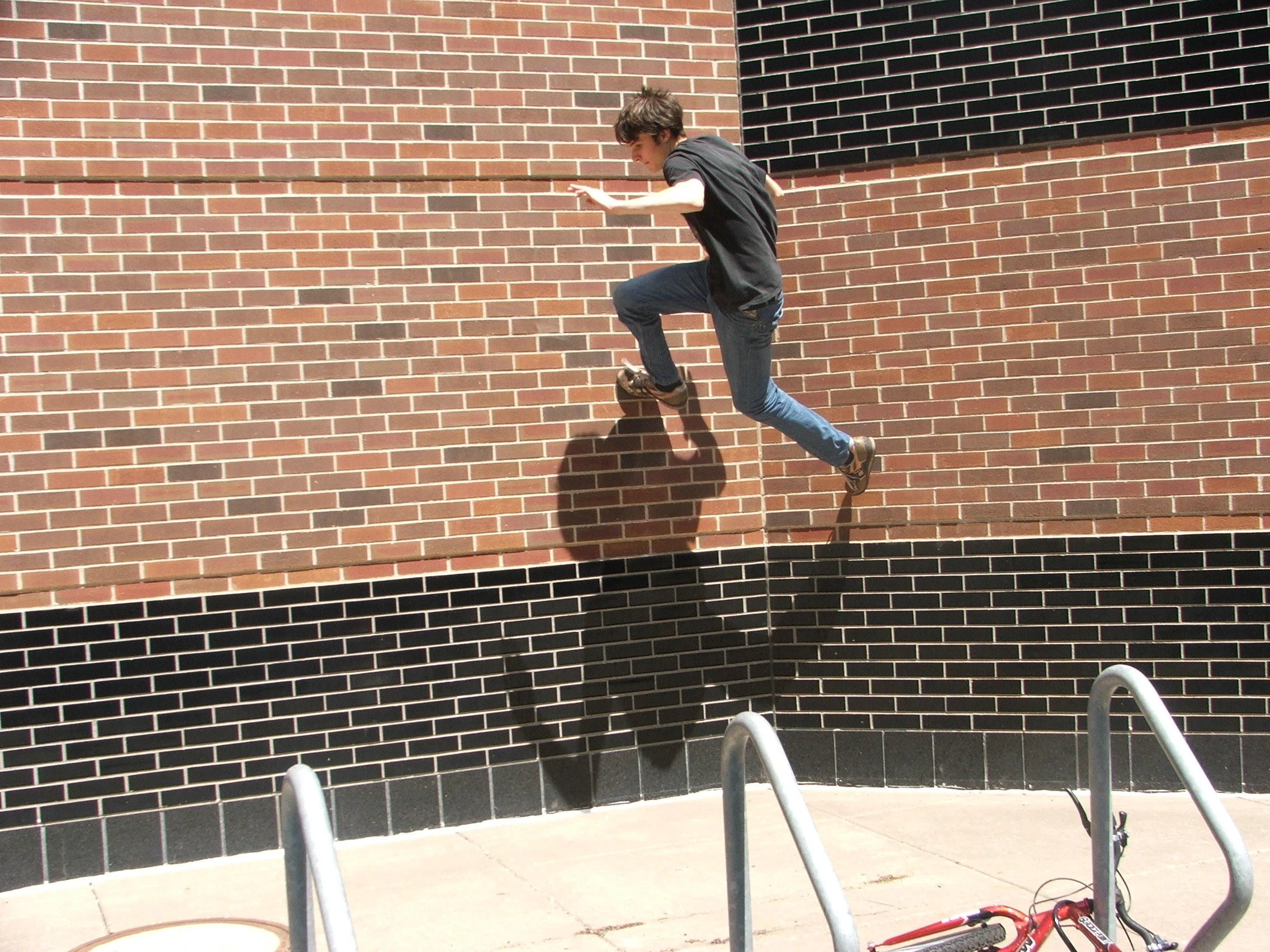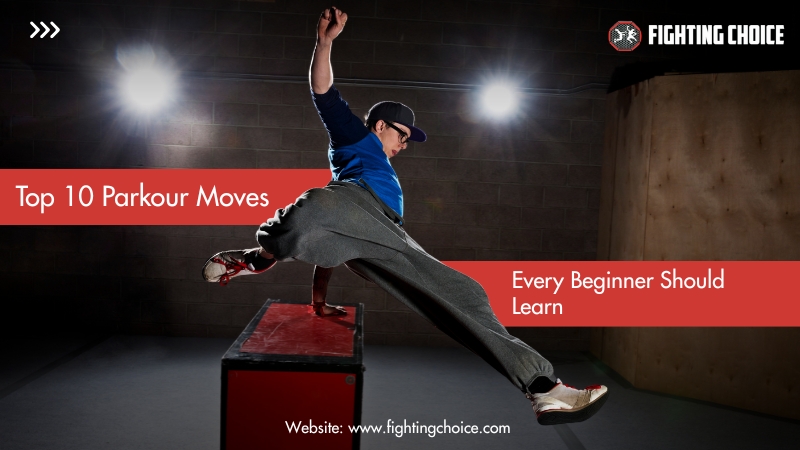Parkour is not just about running and jumping—it’s about understanding how to use your body efficiently and creatively in any environment. Originating from military obstacle course training and later evolving into a global movement, parkour challenges individuals to overcome physical and mental barriers.
For beginners, it may seem intimidating, but the beauty of parkour lies in its adaptability. Anyone can begin regardless of age or fitness level. By starting with the right foundational techniques, you not only develop strength and agility but also improve your focus, balance, and spatial awareness.
What is Parkour Training?
Parkour is a type of physical activity where you learn to move quickly and smoothly through your environment by running, jumping, climbing, and vaulting over obstacles. It focuses on using your body to go from one point to another in the most efficient way possible. It helps improve strength, balance, coordination, and flexibility. The training usually starts with basic moves like rolls, jumps, and vaults, and then moves to more advanced techniques as you gain skill and confidence. Parkour training helps guide this progression with structure and safety. It also builds mental focus and confidence as you overcome challenges.
- Parkour is about moving efficiently through obstacles.
- Involves running, jumping, climbing, and vaulting.
- Practiced in cities, parks, or gyms.
- Improves strength, balance, and coordination.
- Starts with basic moves like rolls and vaults.

Why Start with Basics?
Before attempting advanced stunts, it’s essential to develop a strong foundation. Learning basic parkour moves helps prevent injury and builds your confidence step by step. These movements are the building blocks for mastering more complex techniques later.
1. The Roll (Parkour Roll)
The roll is one of the most essential techniques. It helps protect your joints and distribute the impact when you land from a jump. This move reduces the risk of injury by allowing your body to roll smoothly across the ground.
How to do it:
Tuck your chin and roll over one shoulder, not straight down the spine.
Practice on soft surfaces like grass or mats.
Try to stand up quickly after the roll.
2. The Precision Jump
A precision jump focuses on landing with control on a small or targeted surface, like a rail, beam, or ledge. It’s a great way to develop better coordination, body control, and lower body strength.
Tips:
Focus on where you want to land.
Use your arms to gain momentum.
Bend your knees slightly when you land to absorb the impact.

3. The Safety Vault
The safety vault is often the first vault beginners practice, as it offers a simple and secure way to get over low obstacles with control. It’s used to get over low obstacles like benches, rails, or walls with control and safety.
How to practice:
Place one hand on the obstacle.
Swing one leg over, then bring the other leg around.
Use your other hand for balance if needed.
4. The Wall Run
The wall run is an exciting and dynamic move that lets you run up a vertical surface to reach higher ground.
Run towards the wall at a moderate speed.
Place one foot on the wall and push off.
Reach up with your hands to grab the top.
Start on lower walls and build up to higher ones as you improve.

5. The Cat Hang
The cat hang is a simple move that teaches grip strength and control. You’ll often use it after a wall run or climb to hang from a ledge safely.
How to do it:
Jump and grab a ledge with both hands.
Keep your feet pressed against the wall.
Hold your position and focus on breathing.
6. The Tic Tac
The tic tac is a creative move that lets you push off a wall to change direction or gain height. It’s often used to reach areas that are too high to jump to directly.
Technique:
- Run toward the wall at an angle.
- Step on the wall with one foot.
- Push off and leap toward your target.
7. The Underbar
The underbar is used to pass through gaps or bars quickly and smoothly. It teaches coordination and spatial awareness.
Tips to learn it:
- Jump forward with your body low.
- Grab the bar and tuck your legs to pass through.
- Look forward, not down, to keep balance.
8. The Lazy Vault
The lazy vault is a relaxed, flowing movement used to get over wide obstacles. It looks smooth and effortless and is great for conserving energy.
Steps:
- Approach the obstacle from the side.
- Place one hand on the surface.
- Swing both legs over while using your free hand to guide your balance.
9. The Kong Vault
This vault involves launching your body over an object, pushing off with your hands, and tucking your legs neatly through the gap between your arms. It’s more advanced but great for momentum.
How to practice safely:
- Start with low, soft obstacles.
- Run toward the object and dive forward.
- Place both hands down, then tuck your knees and pull your legs through.
10. The Climb-Up
The climb-up allows you to transition from hanging below a wall or ledge to standing securely on top of it. It’s important for transitions and escaping tricky spots.
Technique:
- Start from a cat hang.
- Pull your body up with your arms.
- Swing one elbow or foot up and push to stand.
Common Mistakes to Avoid
When starting training, it’s easy to get excited and rush into learning advanced moves. However, this can lead to injury, burnout, or frustration. Here are some common mistakes beginners often make—and tips to avoid them:
Skipping warm-ups and cool-downs: Not preparing your body before training can increase the risk of muscle strains and joint injuries. Always stretch, do light cardio, and warm up your joints before and after each session.
Not listening to your body when it needs rest: Soreness, fatigue, or pain are signals to pause. Ignoring these signs may cause burnout or injury.
Training without supervision or safe setup: Practicing without guidance or in unsafe environments can be risky. Use mats or soft surfaces and consider training with a partner or coach.
Avoiding these mistakes will help you enjoy your journey more and improve steadily with time.
Why Choose FightingChoice for Parkour Training?
FightingChoice is your trusted guide for mastering parkour classes — whether you’re a beginner or looking to level up your skills. We offer expert tutorials, safety tips, and structured training programs to help you grow with confidence.
From foundational movements to advanced techniques, our content is designed to help you progress step by step. Join our community and stay motivated through every jump, vault, and climb.
Stay active, stay safe, and keep moving!





